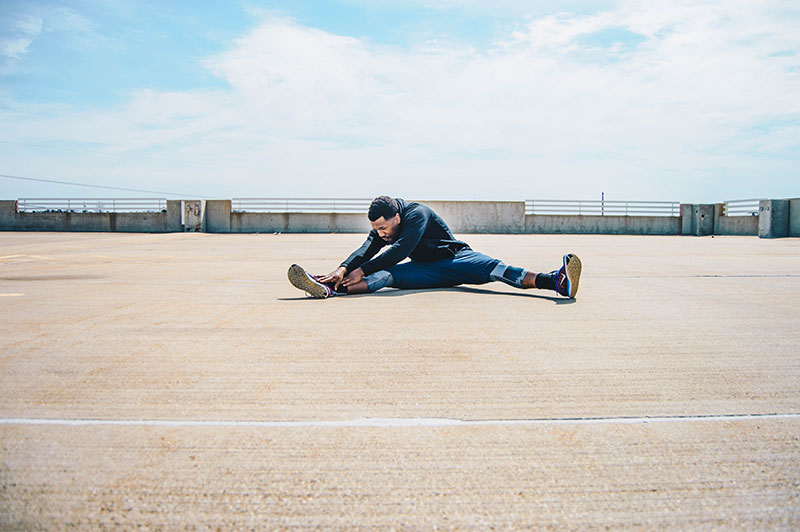Dynamic stretching means slow, controlled movements rather than remaining still and holding a stretch. They include simple movements like arm circles and hip rotations, and flowing movements, as in yoga or walking, or jogging exercises. While studies have not clearly proven this, increasing numbers of experts agree that dynamic stretching is the best routine before a workout or competition.
Warming Up Before Stretching
You should never stretch a cold muscle in any way. Start with some mild aerobic warm-ups to get blood to the tissue before doing any stretching. Warming up increases blood flow, which increases the temperature in muscle, which makes the collagen fibers more elastic like a rubber band.
Dynamic stretching is the best stretching routine before a workout or competition.
Dynamic stretching means slow, controlled movements rather than remaining still and holding a stretch. There are two types of flexibility receptors: a static receptor, which measures magnitude and a dynamic receptor, which measures speed and magnitude. Dynamic activities that require movement, such as running, jumping, or kicking, use the dynamic receptor to limit flexibility. Therefore, a dynamic stretch that stresses the dynamic receptor is more beneficial when preparing for a warm-up when performing a dynamic activity. Dynamic stretching also includes constant motion throughout the warm-up, which maintains the core body temperature, whereas static stretching can see a drop in temperature of several degrees. Another benefit of dynamic stretching is that it prepares the muscles and joints in a more specific manner since the body is going through motions it will likely repeat in the workout. It also helps the nervous system and motor ability since dynamic motions do more to develop those areas than static stretches.
Static stretching before a workout may decrease strength, power, and performance.
After your workout or competition, then do static stretches. Too many people do static stretching before and then nothing after. This is the most common mistake. After your workout is when you should lengthen muscles and improve your flexibility, hold static stretches for about 30 seconds.


 Willard Sheppy is a writer and healthcare practitioner who seamlessly melds scientific knowledge with practical applications in engaging and authoritative articles. He holds a Bachelor of Science in Environmental Science from Oregon State University and a Master’s in Acupuncture and Oriental Medicine from the distinguished Oregon College of Oriental Medicine.
Willard Sheppy is a writer and healthcare practitioner who seamlessly melds scientific knowledge with practical applications in engaging and authoritative articles. He holds a Bachelor of Science in Environmental Science from Oregon State University and a Master’s in Acupuncture and Oriental Medicine from the distinguished Oregon College of Oriental Medicine.




